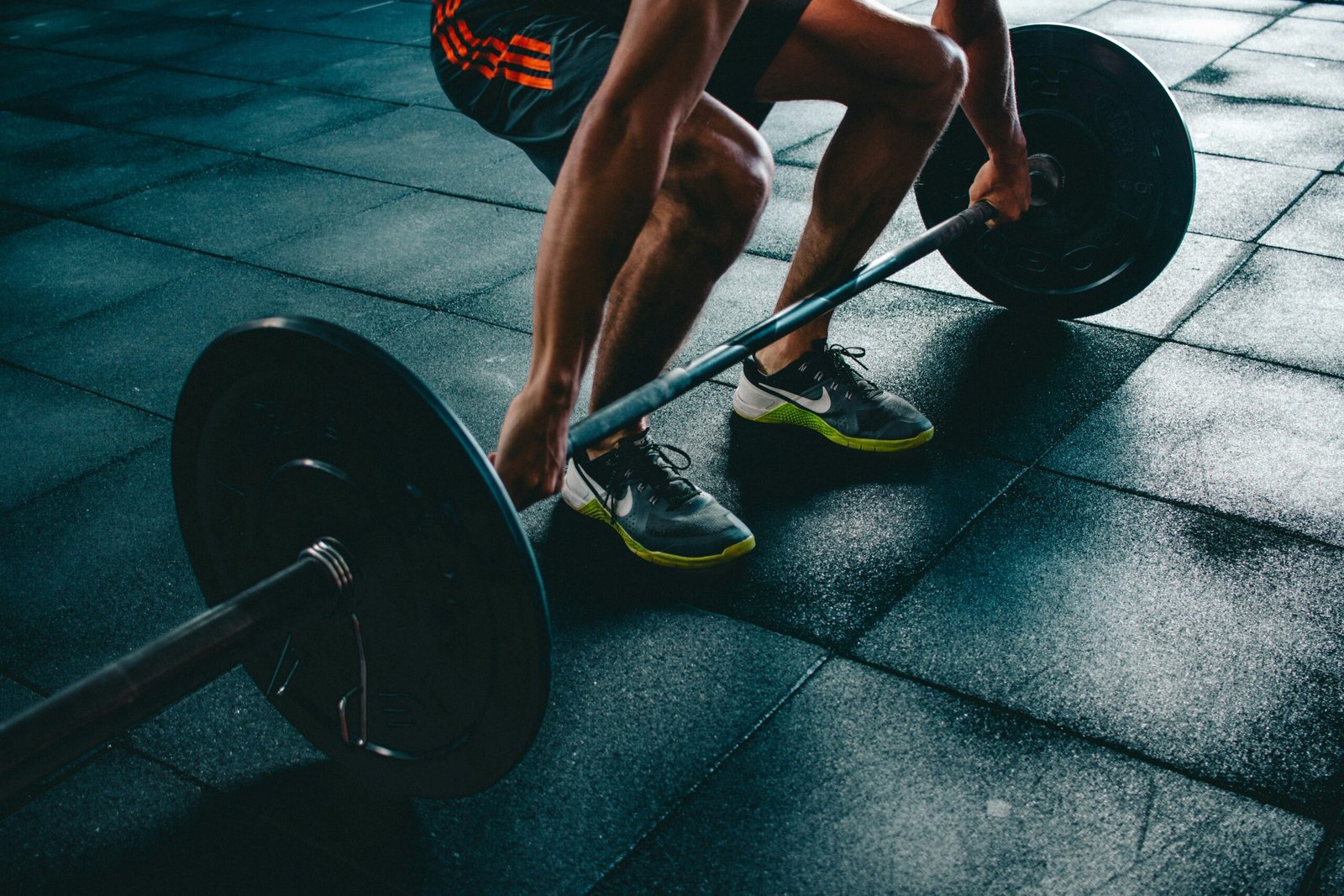Are you looking to build strength and improve your overall fitness? Look no further! This article will guide you through the process of creating effective strength and conditioning programs that are tailored to your specific fitness level. Whether you’re a beginner, intermediate, or advanced athlete, we’ve got you covered. Get ready to elevate your workouts and achieve your fitness goals with ease.

This image is property of images.unsplash.com.
Benefits of Strength and Conditioning Programs
Strength and conditioning programs offer numerous benefits for individuals of all fitness levels. Whether you are a beginner looking to improve your overall fitness or an advanced athlete aiming to enhance your athletic performance, these programs can help you achieve your goals. Let’s explore some of the benefits you can expect to experience through engaging in a strength and conditioning program.
Improved overall fitness
Engaging in a strength and conditioning program can significantly improve your overall fitness. These programs incorporate a wide range of exercises that target various muscle groups, helping to improve your cardiovascular endurance, muscular strength, and flexibility. By consistently participating in these programs, you will notice improvements in your aerobic capacity, muscular endurance, and overall physical well-being.
Increased strength and muscle mass
Strength and conditioning programs are designed to improve your strength and help you build lean muscle mass. Through the use of resistance training exercises, such as weightlifting, you can progressively increase the load placed on your muscles, resulting in greater strength gains over time. Additionally, these programs stimulate muscle growth, leading to increased muscle mass and a more toned physique.
Enhanced athletic performance
For athletes, participating in a strength and conditioning program can have a significant impact on their performance. These programs focus on improving power, speed, agility, and coordination, which are crucial for sports-specific movements. By incorporating exercises that mimic the demands of your sport, you can enhance your athletic performance and gain a competitive edge.
Weight management
Strength and conditioning programs can be an effective tool for managing your weight. By engaging in regular physical activity and building lean muscle mass, you can increase your metabolism and improve your body’s ability to burn calories. Additionally, these programs often include cardiovascular exercises, which can help you burn fat and maintain a healthy weight.
Injury prevention
One of the key benefits of strength and conditioning programs is their ability to help prevent injuries. By incorporating exercises that target specific muscles and joints, these programs can help improve your overall strength, stability, and flexibility, reducing the risk of common injuries. Additionally, by addressing any muscle imbalances or weaknesses, you can correct movement patterns and further decrease the risk of injuries.
Understanding Different Fitness Levels
Before designing a strength and conditioning program, it is essential to have a clear understanding of different fitness levels. Fitness levels can range from beginner to advanced, with each level requiring a tailored approach to training. Let’s explore the characteristics of each fitness level.
Beginner Level
At the beginner level, individuals may have little to no experience with strength and conditioning programs. They may have limited fitness knowledge and may not be familiar with proper exercise technique. As a beginner, it is essential to start slowly and focus on building a solid foundation of strength and fitness. Emphasis should be placed on learning proper exercise form and technique, as well as improving mobility and flexibility.
Intermediate Level
Intermediate-level individuals have some experience with strength and conditioning programs and have built a foundation of strength and fitness. At this level, individuals can handle a higher training volume and intensity compared to beginners. It is crucial to continue to progress by increasing the resistance and complexity of exercises. Additionally, intermediate-level individuals can benefit from incorporating supersets or circuits to increase overall training intensity.
Advanced Level
Advanced-level individuals have a high level of fitness and strength and have developed advanced training techniques. These individuals often have specific performance goals and may be training for competitive sports or events. At this level, training should focus on high-intensity exercises and advanced training methods to maximize performance. Introducing plyometric and explosive movements can further enhance power and athletic performance.

This image is property of images.unsplash.com.
Designing a Strength and Conditioning Program
When designing a strength and conditioning program, several factors need to be considered. These factors include assessing fitness goals, identifying individual limitations, creating a balanced workout routine, and incorporating strength, cardiovascular, flexibility, and mobility exercises.
Assessing fitness goals
To design an effective program, it is essential to assess your fitness goals. This involves understanding what you want to achieve through the program, whether it be improving overall fitness, increasing strength, or enhancing athletic performance. By clarifying your goals, you can tailor your program to meet those specific objectives.
Identifying individual limitations
Every individual has unique limitations, whether they are related to mobility, flexibility, or previous injuries. It is crucial to identify these limitations to design a program that is safe and effective. By addressing these limitations, you can modify exercises or incorporate specific exercises that help improve these areas.
Creating a balanced workout routine
A balanced workout routine is essential to ensure overall strength and conditioning. This involves targeting all major muscle groups and incorporating a mix of strength, cardiovascular, flexibility, and mobility exercises. By incorporating different types of exercises, you can achieve a well-rounded fitness program that addresses all aspects of physical fitness.
Incorporating strength training exercises
Strength training exercises are a crucial component of any strength and conditioning program. These exercises involve resistance training and focus on building strength and muscle mass. By progressively increasing the load, you can continually challenge your muscles and stimulate growth and strength gains.
Including cardiovascular exercises
Cardiovascular exercises help improve cardiovascular endurance and burn calories. These exercises can include activities such as running, cycling, or swimming. By incorporating cardiovascular exercises into your program, you can improve your overall fitness, increase your aerobic capacity, and aid in weight management.
Integrating flexibility and mobility exercises
Flexibility and mobility exercises are often overlooked but are essential for overall fitness and injury prevention. These exercises help improve joint range of motion, muscle elasticity, and overall flexibility. By incorporating dynamic warm-up exercises and static stretching into your program, you can improve your mobility and reduce the risk of injuries.
Building Progression in Workouts
Building progression in workouts is crucial to continue challenging your body and making progress. This involves starting with basic exercises and gradually increasing intensity and resistance. Additionally, implementing progressive overload and periodizing training for long-term progress are key strategies for building progression.
Start with basic exercises
When starting a strength and conditioning program, it is important to begin with basic exercises that allow you to focus on proper form and technique. This includes exercises such as squats, lunges, push-ups, and planks. By mastering these fundamental movements, you can build a solid foundation for more advanced exercises.
Gradually increase intensity and resistance
To continue making progress, it is essential to gradually increase the intensity and resistance of your workouts. This can be done by increasing the weight lifted, the number of repetitions performed, or the intensity of cardiovascular exercises. By gradually increasing the demands placed on your body, you can continue to stimulate muscle growth and strength gains.
Implement progressive overload
Progressive overload is a training principle that involves continually increasing the demands placed on your body to promote adaptation and progression. This can be achieved by increasing the weight lifted, the number of sets and repetitions performed, or the difficulty of exercises. By implementing progressive overload, you can ensure that you are continually challenging your body and making progress.
Periodize training for long-term progress
Periodization involves dividing your training program into specific phases or cycles, each with its own focus and goals. This allows for targeted training and optimal adaptation. By structuring your program in this way, you can prevent plateaus, reduce the risk of overtraining, and make consistent progress over the long term.

This image is property of images.unsplash.com.
Modifying Exercises for Different Fitness Levels
Not all exercises are suitable for individuals at every fitness level. It is important to provide variations for beginners, options for progressions for intermediate-level individuals, and adaptations for individuals with limitations or injuries. By modifying exercises, you can ensure that each individual is working at an appropriate level and challenging themselves appropriately.
Offer variations for beginners
For beginners, it is important to provide variations of exercises that are less complex or demanding. This can involve using lighter weights or resistance bands, reducing the range of motion, or providing additional support or assistance. By offering variations, beginners can gradually develop the strength and technique necessary to perform more advanced exercises.
Provide options for progressions
Intermediate-level individuals can benefit from having options for progressions. This involves providing variations of exercises that increase the intensity, complexity, or resistance. By offering progressions, individuals can continue to challenge themselves and make progress as they become stronger and more proficient in their exercises.
Adapt exercises for limitations or injuries
Individuals with limitations or injuries may require adaptations to exercises to ensure safety and prevent further damage. This can involve modifying the range of motion, providing alternative exercises that do not aggravate the injury, or using equipment or props to reduce stress on specific joints or muscles. By adapting exercises, individuals can continue to participate in the program while addressing their limitations or injuries.
Programming for Beginner Fitness Levels
When programming for beginners, it is important to focus on the fundamentals and technique, use lighter weights with higher repetitions, incorporate bodyweight exercises, and include longer rest periods. These considerations help to build a solid foundation and gradually increase overall strength and fitness.
Focus on fundamentals and technique
For beginners, focusing on proper exercise technique and form is crucial. This involves teaching the correct movement patterns and ensuring that exercises are performed with the appropriate range of motion. By prioritizing fundamentals and technique, beginners can develop a strong foundation and prevent the development of bad habits or compensatory movements.
Use lighter weights with higher repetitions
Using lighter weights with higher repetitions is recommended for beginners. This allows individuals to focus on perfecting their technique while gradually increasing their strength and endurance. By using lighter weights, beginners can also prevent excessive muscle soreness or injury as they adapt to the demands of the program.
Incorporate bodyweight exercises
Bodyweight exercises are an excellent option for beginners, as they require little to no equipment and can be easily modified to suit individual fitness levels. Exercises such as squats, lunges, push-ups, and planks can effectively build strength, stability, and overall fitness. By incorporating bodyweight exercises, beginners can develop a strong foundation before progressing to more advanced exercises.
Include longer rest periods
Beginners may require longer rest periods to allow for adequate recovery between sets and exercises. This is especially important as they adapt to the demands of the program and develop their cardiovascular endurance. By incorporating longer rest periods, beginners can maintain the quality of their movements and perform exercises with correct form.
Programming for Intermediate Fitness Levels
As individuals progress to the intermediate level, their training program should reflect their increased fitness and strength. This involves increasing resistance and weight, introducing more complex exercises, incorporating supersets or circuits, and shortening rest periods to increase overall training intensity.
Increase resistance and weight
Intermediate-level individuals should gradually increase the resistance and weight used in their exercises. This can be accomplished by using heavier dumbbells or barbells, incorporating resistance bands or weighted vests, or adjusting the incline or difficulty of exercises. By increasing the resistance, individuals can continue to challenge their muscles and further develop their strength.
Introduce more complex exercises
As individuals progress to the intermediate level, it is beneficial to introduce more complex exercises that require greater coordination, stability, and technique. This can include exercises such as deadlifts, pull-ups, kettlebell swings, or single-leg squats. By incorporating more complex exercises, individuals can enhance their overall strength and athleticism.
Incorporate supersets or circuits
Supersets or circuits involve performing multiple exercises back-to-back with little to no rest in between. This method increases overall training intensity and cardiovascular demand. By incorporating supersets or circuits, intermediate-level individuals can further challenge their endurance and improve their overall fitness.
Shorten rest periods
Intermediate-level individuals can benefit from shorter rest periods between sets and exercises. This helps to increase the overall training intensity and metabolic demand of the program. By shortening rest periods, individuals can stimulate muscle growth, improve cardiovascular endurance, and continue to make progress.
Programming for Advanced Fitness Levels
At the advanced fitness level, individuals have developed a high level of strength, endurance, and athleticism. Their training program should reflect this advanced fitness level by focusing on high-intensity training, implementing advanced exercises and techniques, using heavier weights and lower repetitions, and incorporating plyometrics and explosive movements.
Focus on high-intensity training
At the advanced level, training should focus on high-intensity exercises and training methods. This involves challenging the body through the use of heavy weights, explosive movements, and high-intensity intervals. By pushing the limits of their physical capabilities, advanced-level individuals can further enhance their strength, power, and overall fitness.
Implement advanced exercises and techniques
Advanced-level individuals can benefit from incorporating advanced exercises and training techniques into their program. This can include exercises such as Olympic lifts, plyometric exercises, or advanced gymnastics movements. By introducing new exercises and techniques, individuals can continually challenge themselves and stimulate further adaptations.
Use heavier weights and lower repetitions
At the advanced level, individuals should progressively increase the amount of weight lifted while decreasing the number of repetitions performed. This helps to develop maximum strength and power. By using heavier weights and lower repetitions, advanced-level individuals can further increase their muscle mass, enhance their overall strength, and improve their athletic performance.
Incorporate plyometrics and explosive movements
Plyometric exercises and explosive movements are essential for advanced-level individuals. These exercises involve quick, explosive movements that aim to develop power, speed, and agility. Plyometrics such as box jumps, medicine ball throws, or depth jumps can help improve explosiveness and maximize athletic performance.
Monitoring Progress and Making Adjustments
Regularly monitoring your progress and making necessary adjustments to your program is crucial for continued improvement. This involves tracking and assessing performance, adjusting intensity and resistance based on progress, and modifying exercises to prevent plateaus.
Regularly track and assess performance
To ensure progress and improvement, it is important to regularly track and assess your performance. This can be done by monitoring key indicators such as strength gains, endurance improvements, or body composition changes. By keeping a record of your progress, you can identify areas of improvement and adjust your program as needed.
Adjust intensity and resistance based on progress
As you make progress and your fitness level improves, it is important to adjust the intensity and resistance of your workouts. This can involve increasing the weights lifted, the number of repetitions performed, or the duration or intensity of cardiovascular exercises. By adjusting these variables, you can continue to challenge your body and make consistent progress.
Modify exercises to prevent plateau
To prevent plateaus and promote continued progress, it is important to periodically modify your exercises. This can involve changing the exercise variation, adjusting the tempo or range of motion, or incorporating different training techniques. By modifying exercises, you can effectively stimulate muscle growth, prevent boredom, and keep your workouts varied and challenging.
Seeking Professional Guidance
While designing and implementing a strength and conditioning program can be done independently, seeking professional guidance can provide valuable expertise and ensure safety and effectiveness. Consider consulting with a certified strength and conditioning specialist or working with a personal trainer. Additionally, joining fitness classes or group training sessions can provide additional support, motivation, and accountability.
Consult with a certified strength and conditioning specialist
Certified strength and conditioning specialists have the knowledge and experience to design and implement effective strength and conditioning programs. They can assess your individual needs, goals, and limitations, and provide personalized guidance and instruction. By consulting with a specialist, you can ensure that your program is tailored to your specific needs and abilities.
Consider working with a personal trainer
A personal trainer can provide one-on-one guidance, support, and accountability throughout your strength and conditioning journey. They can design personalized programs, monitor your progress, and provide feedback and guidance on exercise technique. By working with a personal trainer, you can maximize your results and ensure that you are training safely and effectively.
Join fitness classes or group training sessions
Fitness classes or group training sessions provide a supportive and motivating environment to engage in strength and conditioning programs. These sessions are often led by qualified instructors who can provide guidance, modifications, and motivation. Additionally, the group setting can provide a sense of camaraderie and accountability, making it easier to stay committed to your fitness goals.
In conclusion, strength and conditioning programs offer numerous benefits for individuals of all fitness levels. From improved overall fitness and increased strength to enhanced athletic performance and injury prevention, these programs can help you achieve your health and fitness goals. By understanding different fitness levels, designing a tailored program, building progression, modifying exercises, and consistently monitoring progress, you can create an effective strength and conditioning program that meets your individual needs and supports your long-term health and fitness journey. Remember, seeking professional guidance can provide valuable expertise and ensure safety and effectiveness. So, take the first step and embark on your strength and conditioning journey today!
